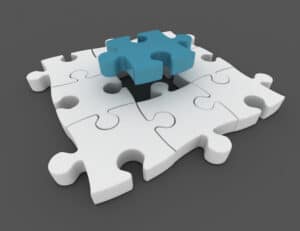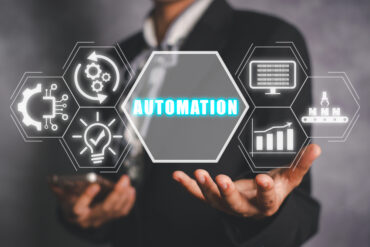
Graph RAG represents a significant step forward in AI-driven content generation. By combining the strengths of knowledge graphs with advanced language models, it enables users to improve app responses over time with the creation of more accurate, relevant, and contextually rich responses.
Graph RAG is an advanced method that enhances the traditional retrieval-augmented generation (RAG) approach, which is used to improve the way AI models generate responses. Instead of just retrieving information from a general database, Graph RAG uses a knowledge graph—a structured representation where concepts (nodes) are connected by relationships (edges). This method helps AI models produce more accurate and contextually relevant responses by incorporating structured, detailed information.
How Graph RAG Works
In a nutshell, Graph RAG retrieves a knowledge graph and uses it to inform a large language model (LLM) when generating responses. There are two main types of knowledge graphs:
- Entity-Centric Knowledge Graphs: Focus on entities (like people, places, or things) and their relationships.
- Content-Centric Knowledge Graphs: Designed specifically for Graph RAG, they focus on linking content (like text chunks) stored in a database, helping the AI understand and connect different pieces of information.
What’s great about Graph RAG is that you don’t need a specialized graph database to use it. Content-centric graphs, in particular, integrate well with LLMs, allowing for a deeper, more cost-effective understanding of the context.
See also: Where to Train Your AI Dragon
Benefits of Graph RAG
Graph RAG brings several advantages to the table including enhanced contextual understanding. By understanding the relationships between different pieces of information, LLMs can generate more coherent and contextually appropriate responses. They also support improved knowledge integration, which allows the model to pull in information from various sources, making responses more accurate and informed.
Graph RAG also offers a way to handle edge cases where traditional methods might miss relevant information. For instance, if your RAG pipeline isn’t retrieving the necessary context even though you know it’s in your database, Graph RAG can create a link to the relevant documents, leading to more insightful and accurate results over time.
Challenges with Traditional Knowledge Graphs
Entity-centric knowledge graphs, while useful, come with their own set of challenges. They require a lot of effort to create and maintain, often needing domain experts to guide the process. This approach can be costly and time-consuming, especially when the graphs have to be built before the actual questions or needs are known.
On the other hand, content-centric knowledge graphs preserve all the original content, allowing AI to extract the most relevant information based on the specific question. This method is simpler, doesn’t require domain experts, and can automatically add connections as new information becomes available.
Managing highly-connected knowledge graphs can be tricky, but some implementations of content-centric graphs offer a solution. The best vector databases can store and retrieve content-centric graphs in a way that makes it easy to manage even complex, highly-connected graphs without slowing down performance. This ensures that the AI can quickly retrieve relevant and diverse information when needed.
Future Directions for Graph RAG
The future of Graph RAG looks promising, with several exciting developments emerging today and on the horizon:
- Automatic Extraction: Simplifying the manual process of linking content by incorporating automatic extraction techniques.
- Multimodal Links: Creating connections between different types of content, like linking text to related images or tables.
- Advanced Document Linking: Enhancing the ability to link specific terms or phrases within documents, making it easier to navigate complex texts.
- Natural Language Reference Detection: Automatically detecting and linking references within documents.
- Hybrid Knowledge Graph Support: Supporting both content-centric and entity-centric knowledge graphs.
- Summarization: Developing methods to summarize the information around a particular node in the graph, making it easier to understand the broader context.
Graph RAG represents a significant step forward in AI-driven content generation. By combining the strengths of knowledge graphs with advanced language models, it enables users to improve app responses over time with the creation of more accurate, relevant, and contextually rich responses. As development continues, Graph RAG is poised to become an even more powerful tool, pushing the boundaries of what’s possible in AI applications.




























